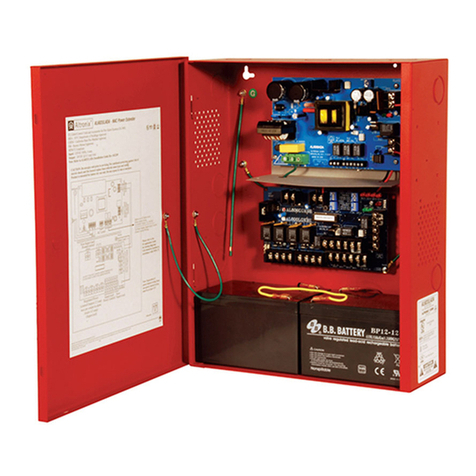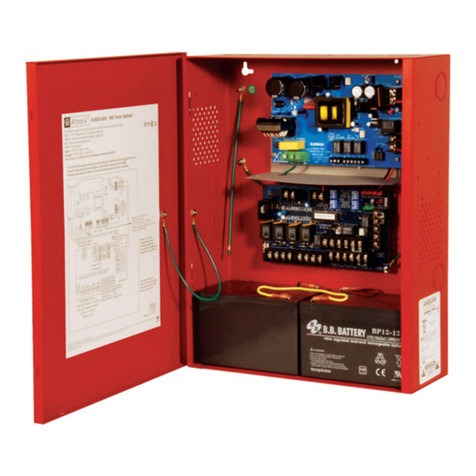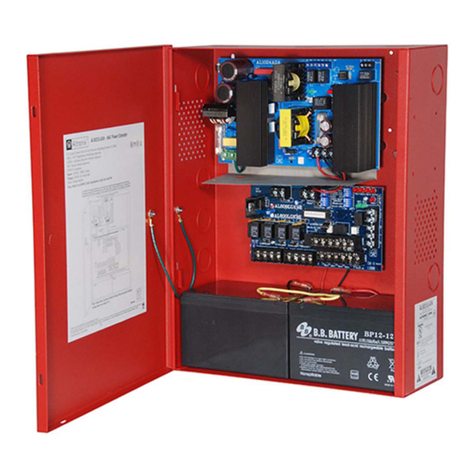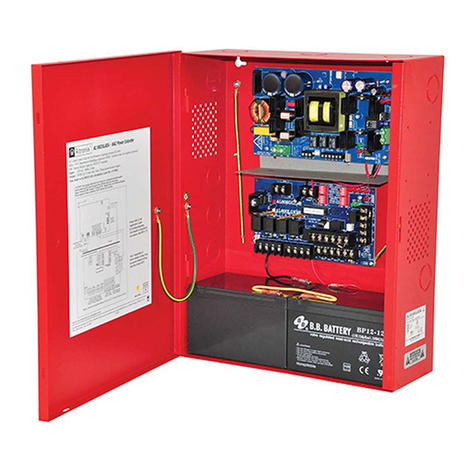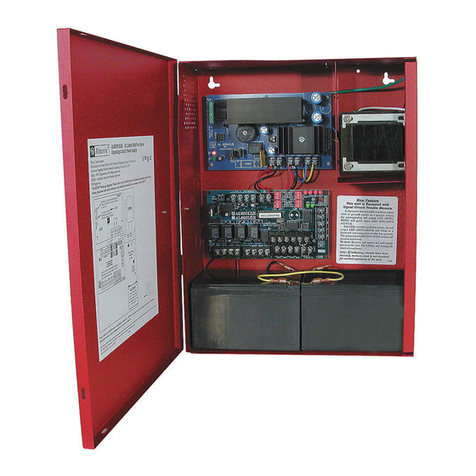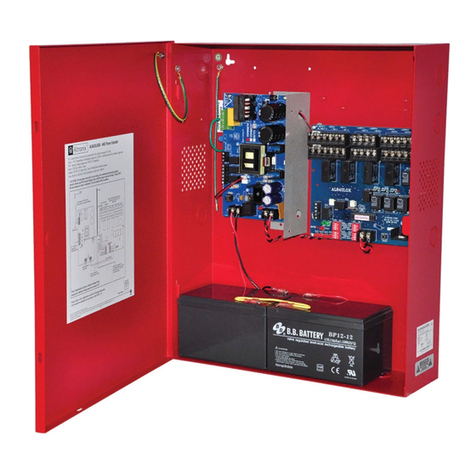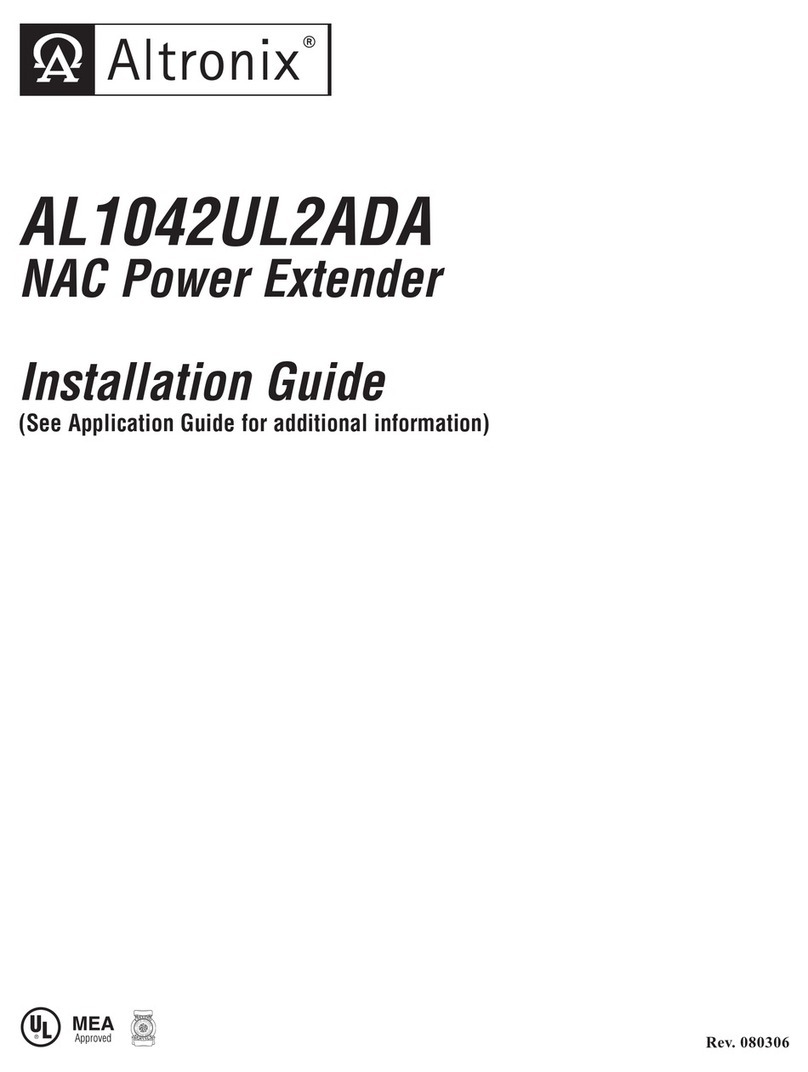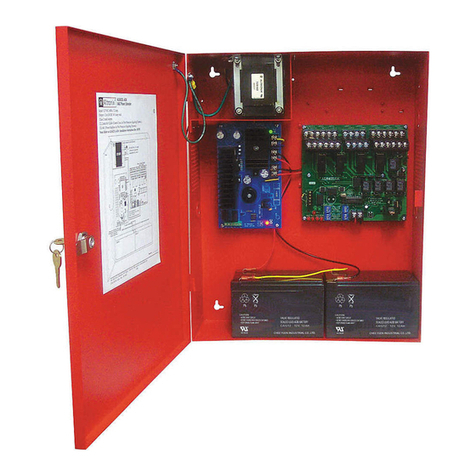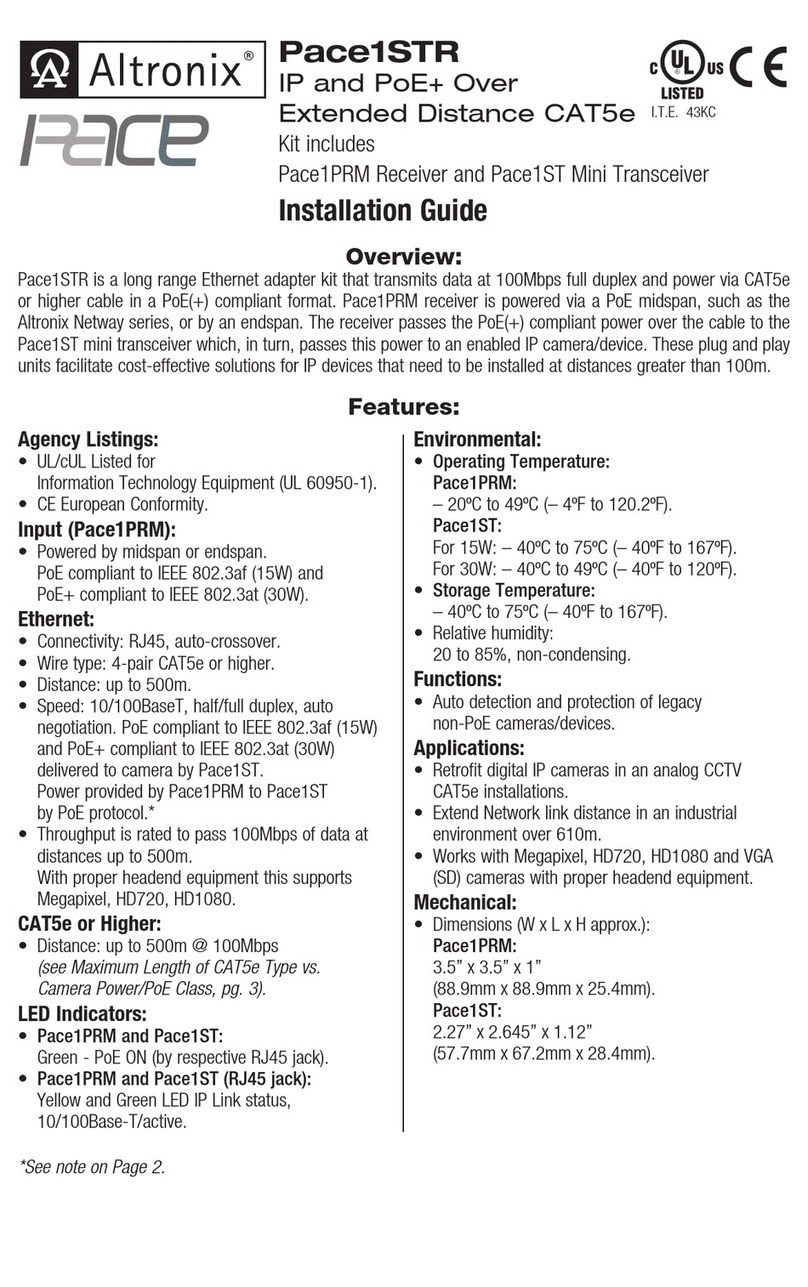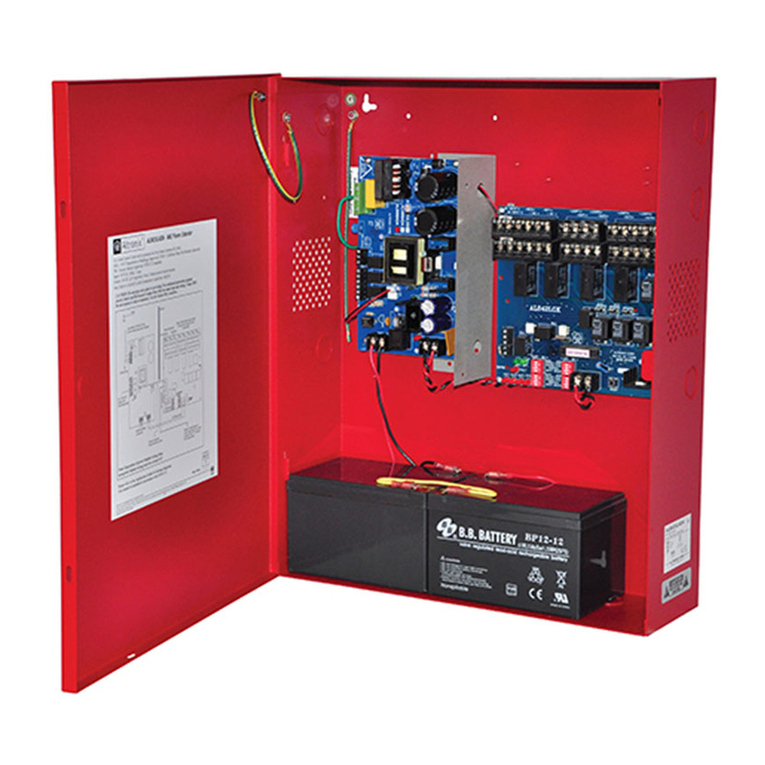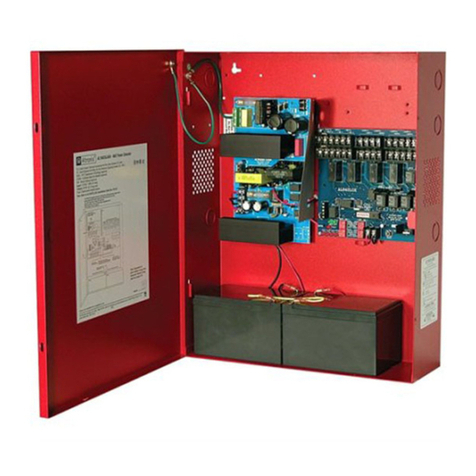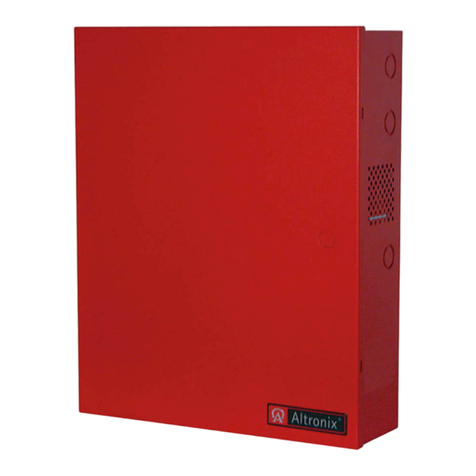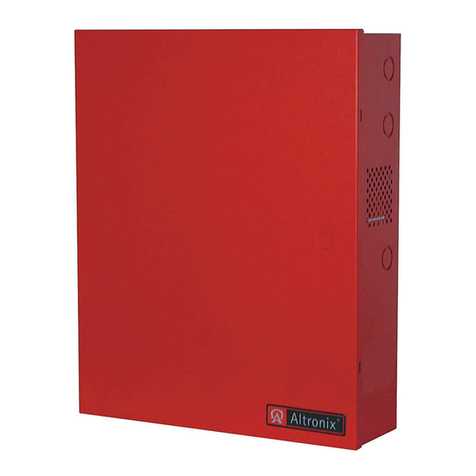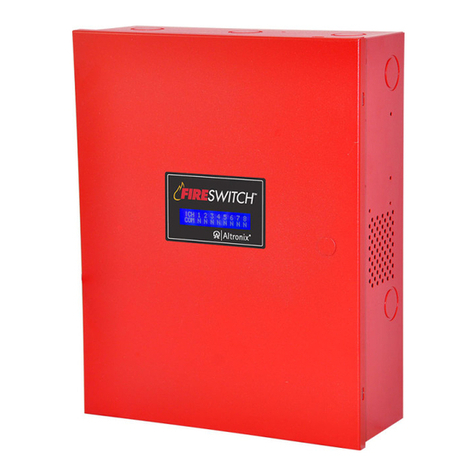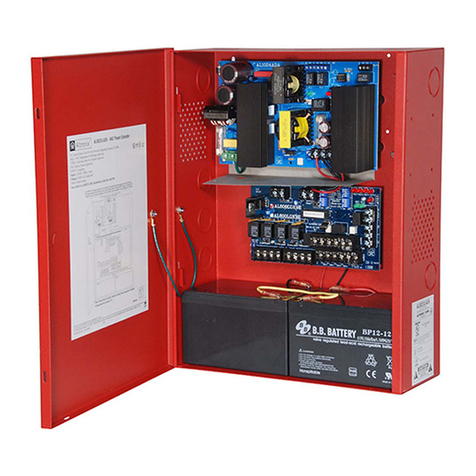
Overview:
The Altronix AL800ULADA is an extremely cost effective 8 amp voltage regulated remote power supply/battery charger.
The AL800ULADA may be connected to any 12 or 24 volt Fire Alarm Control Panel (FACP). Primary applications include
Notification Appliance Circuit (NAC) expansion (supports ADA requirements) and will provide auxiliary power to support
system accessories. The unit delivers regulated and filtered 24 or 12 volt power via four (4) Class B, two (2) Class A or two
(2) Class B and one (1) Class A Notification Appliance Circuits. Additionally, a separate 1 amp auxiliary output with reset
for four (4)-wire smoke detectors. The 8 amp rated supply current can be divided between the four (4) outputs for power-
ing notification appliances. Each output is rated at 2 amp max., and can be independently programmed for Steady,
Temporal Code 3 or *Strobe Synchronization. All outputs may be programmed for Input to Output Follower Mode (output
will follow input. i.e. March Time Input, March Time Output). An individual output of 4 amp is achieved by paralleling 2
outputs. The AL800ULADA in non-alarm condition provides independent loop supervision for Class A and/or Class B
FACP NAC circuits. In the event of a loop trouble the FACP will be notified via the AL800ULADA’s steered input (input
1 or input 2). In addition, there are common trouble output terminals (NC, C, NO) which are used to indicate general
loop/system trouble. A common trouble input is provided for optional NC (normally closed) devices to report trouble to
the FACP. Two (2) FACP signaling outputs can be connected to AL800ULADA’s inputs. These inputs can then be directed
to control supervision and power delivery to any combination of the four (4) outputs.
Specifications:
AL800ULADA - NAC Power Extender
Agency Listings:
• UL Listed for Control Units and Accessories for Fire
Alarm Systems (UL 864) and UL Listed Standard for
Safety for Fire Protective Signaling Systems (UL 1481).
• MEA - NYC Department of Buildings Approved.
• CSFM - California State Fire Marshal Approved.
• FM - Factory Mutual Approved.
•NFPA 72 Compliant.
Input:
• Power input 115VAC/60 Hz, 3.2 amp.
• Two (2) Class A or two (2) Class B FACP inputs.
• Two (2) NC dry contact trigger inputs.
Output:
• Class 2 Rated power limited outputs
• Field selectable 24VDC or 12VDC voltage regulated
power limited outputs.
• 24VDC or 12VDC rated @ 8 amp max.
• Typical 8.6 mV output voltage ripple.
•Separate 1 amp auxiliary output with built-in and
remote reset capability.
• Two (2) outputs may be paralleled for more power on
an indicating circuit.
•Programmable supervised indicating circuit outputs:
Four (4) Class B or Two (2) Class A or One (1) Class
and Two (2) Class B.
Battery Backup:
• Built-in charger for sealed lead acid or gel
type batteries.
• Automatic switchover to stand-by battery when
AC Fails.
• Zero voltage drop when switching over to
battery backup.
• Circuit breaker battery protection.
Supervision:
• AC fail supervision (form "C" contact, 1 amp / 28VDC).
Factory set for 1 minute with optional 6 hour delay
setting (field selectable).
• Battery presence and low battery supervision
(form "C"contact, 1 amp / 28VDC).
Visual Indicators:
• Input and output status LED indicators.
Special Features:
• Temporal Code 3, *Strobe Sync Mode, Steady Mode,
Input to Output Follower Mode (maintains
synchronization of notification appliances circuit).
•March Time.
• Compatible with 12 or 24VDC fire panels.
• Filtered and electronically regulated output.
• Output loop supervision steered to input 1 or input 2.
• Common trouble input and output.
• Ground fault detection.
Additional Features:
• Unit includes power supply, red enclosure, cam lock,
open frame transformer and battery leads.
• Thermal and short circuit protection with auto reset.
Enclosure Dimensions:
15.5"H x 12"W x 4.5"D
Product Weight:
17 lbs.
- 2 -
